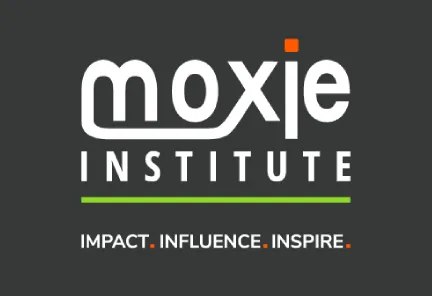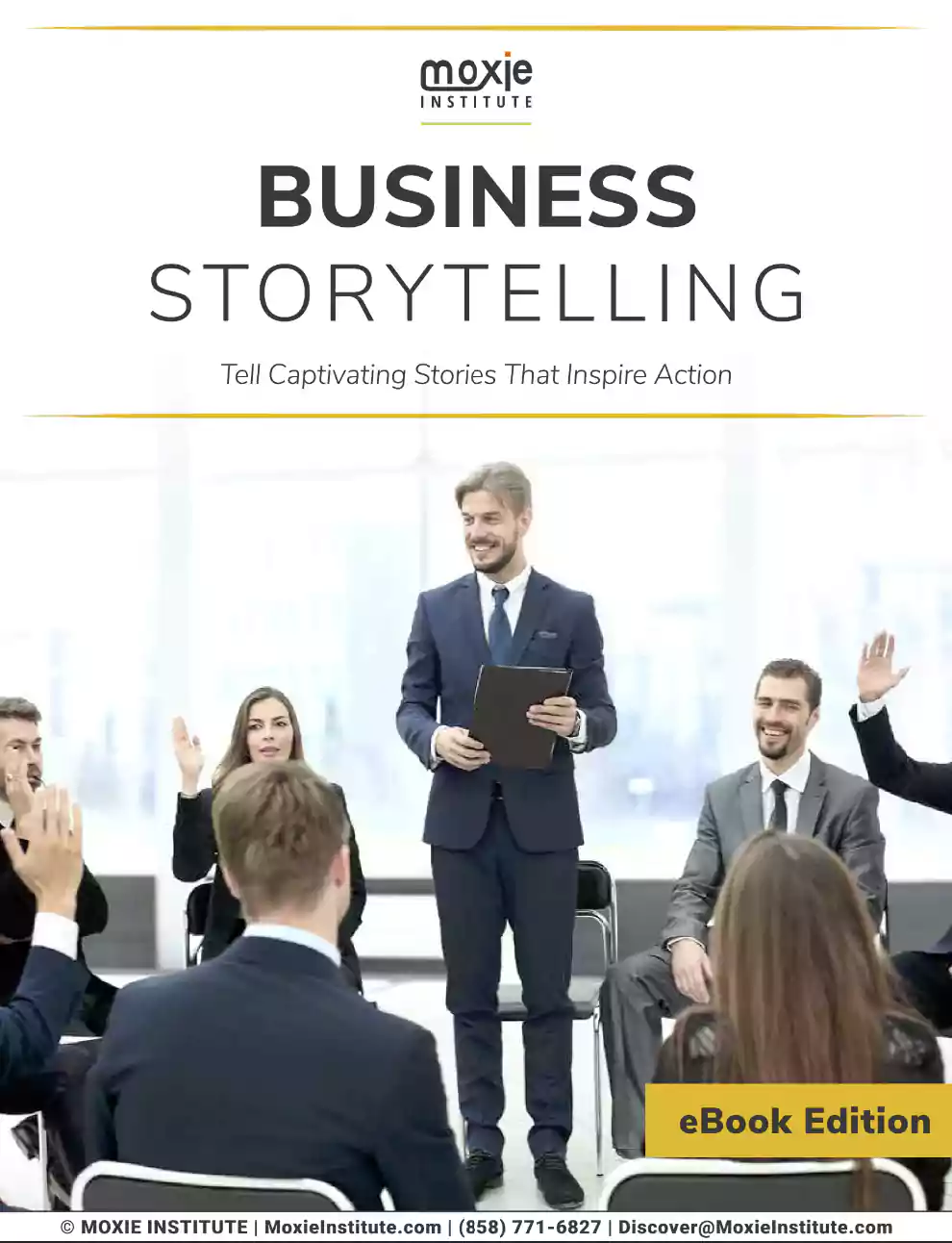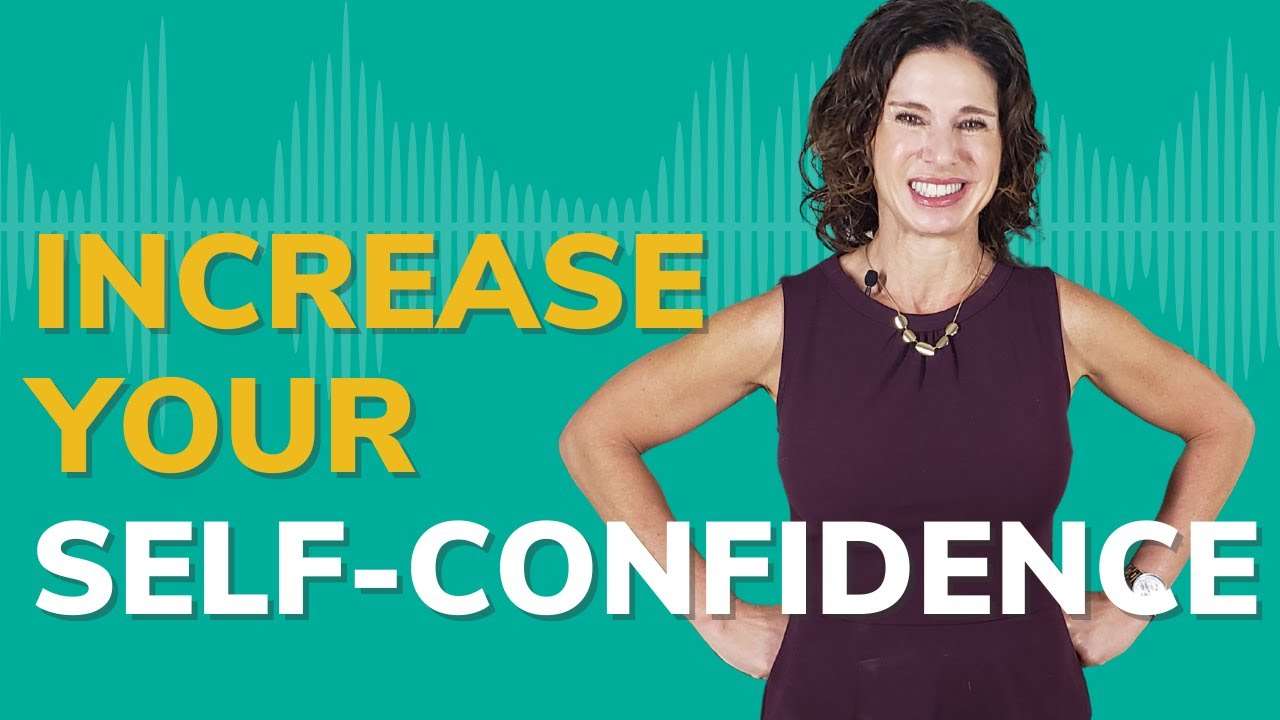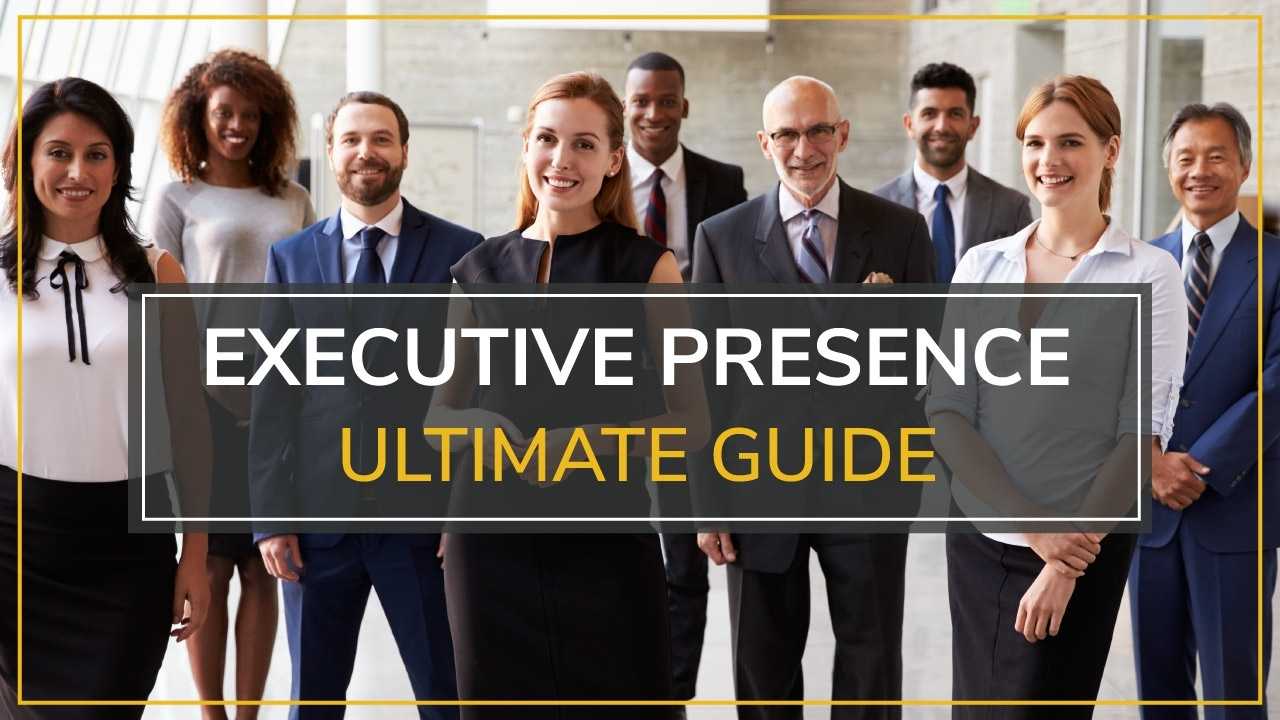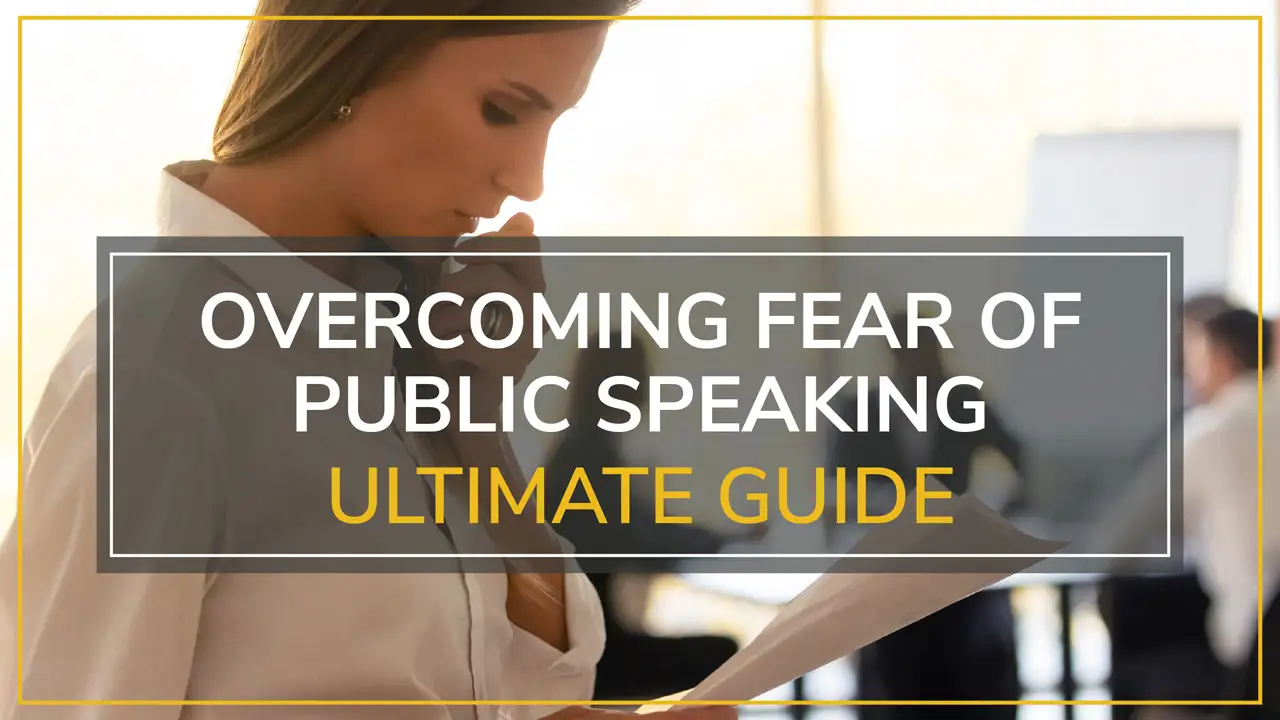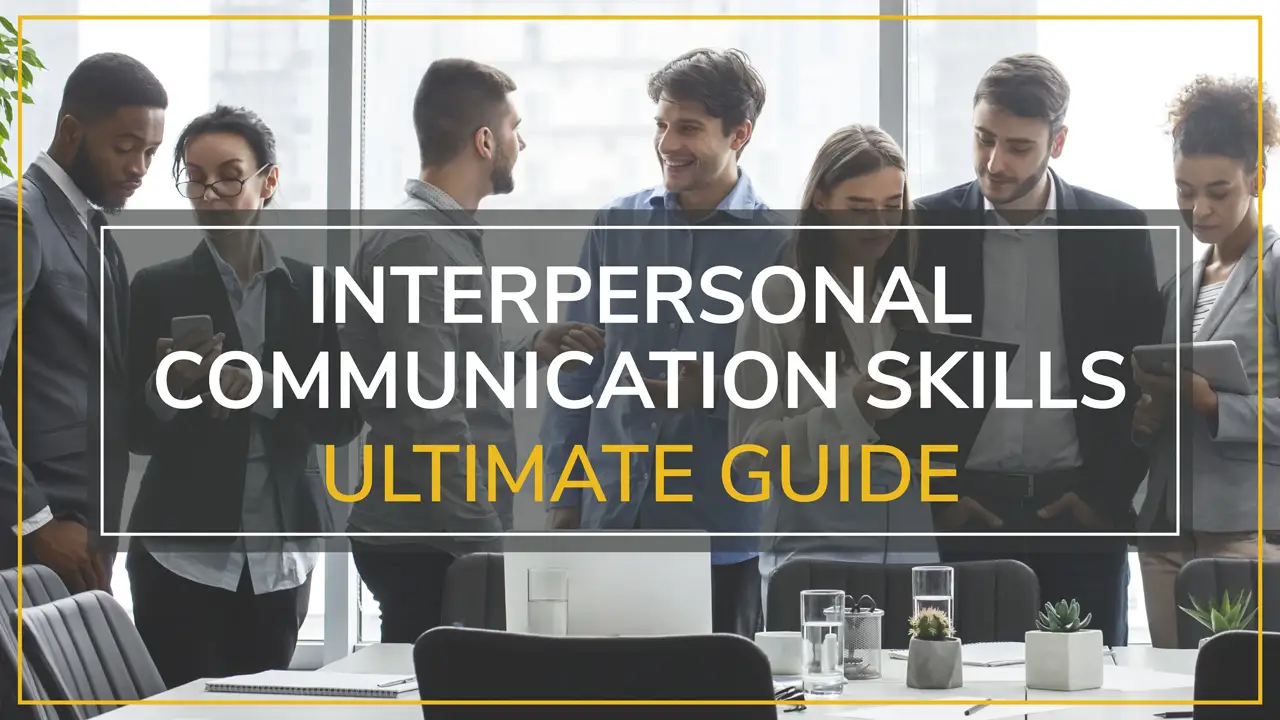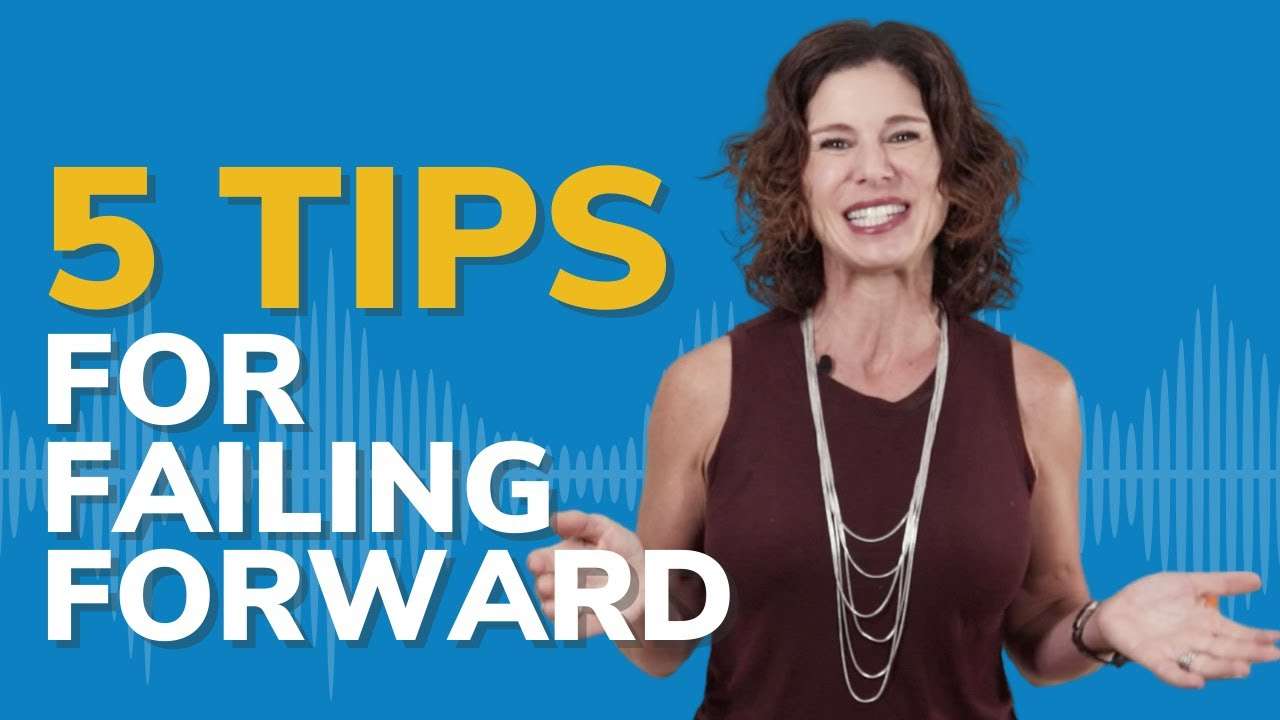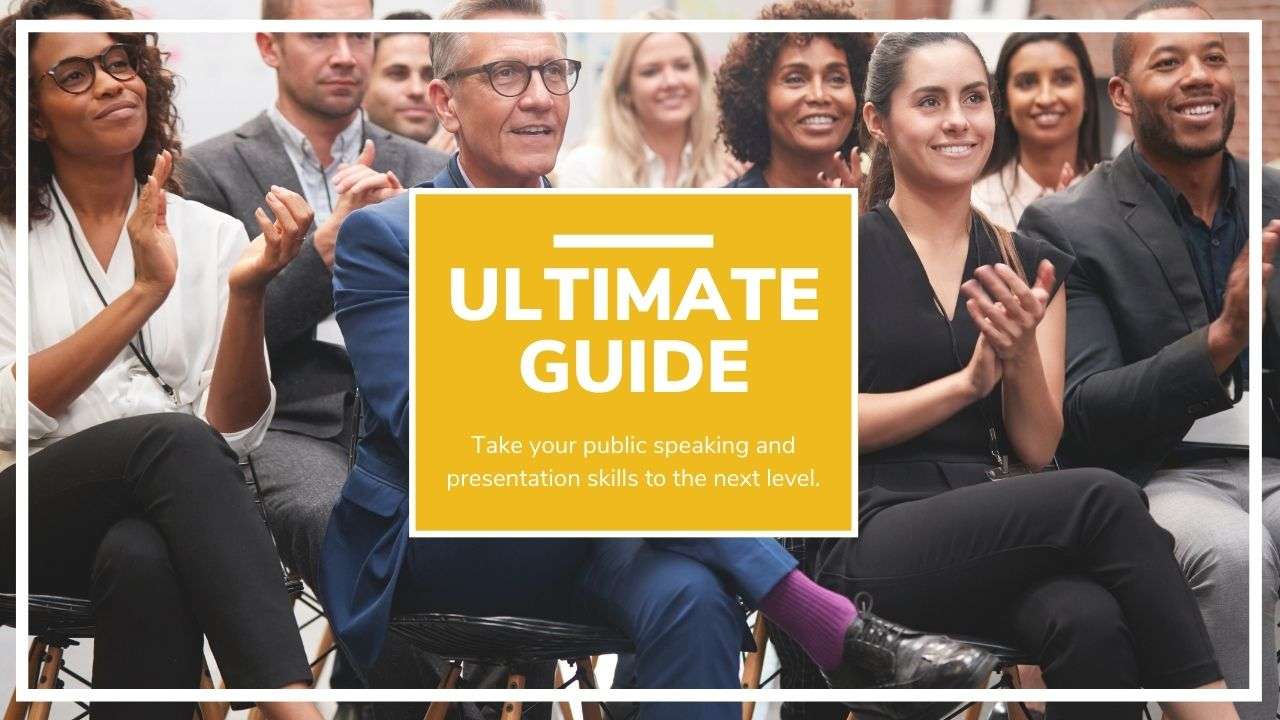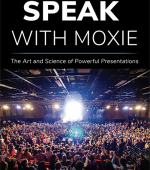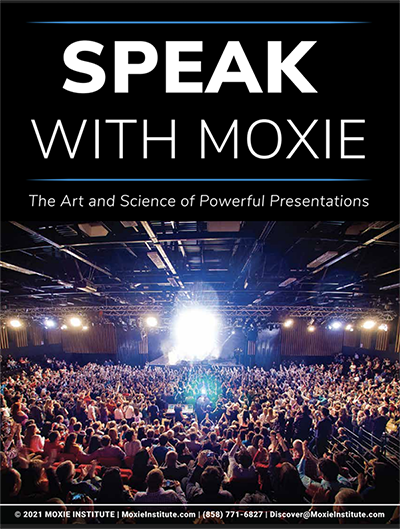None of us like to do hard things or even want to do hard things. But we can do hard things and actually, we must do hard things if we want to achieve anything in life.
Stay tuned! today on the Moxie Talk blog, we are unpacking why—and most importantly—how to do hard things.
—
Hey everyone, I’m Fia Fasbinder welcome to the Moxie Talk blog, where we help you find your voice, share your message, and lead with confidence.
Today we’re going to take a step away from my typical videos on presentation skills and public speaking and go deep on something that’s not only crucial for upping our speaking game, but crucial for upping any of our games in life in general—and that is doing hard things.
I’m sure many of you are thinking “Well! to do hard things, you just need willpower.“I agree with that but more than willpower we need
- Tenacity
- Grit
- Self-Confidence
—
Before we dive into how to do these hard things, I think we need to take a step back and talk a little bit about the difference between self-confidence and self-worth.
Anybody that knows me and has followed my story here on Youtube and has worked with us in Moxie has known that I’ve had my own struggles with both self-worth and self-confidence.
But what is the difference between the two? Here are my thoughts on the difference —
Self-worth is knowing that despite anything, despite everything, we’re worthy of love. We’re worthy of being seen and heard. We’re worthy of joy.
No matter what you do or fail to do, you are enough
Self-confidence is knowing that we have acquired some new skills or achieved some new things in life.
It’s possible to feel confident about your skills but not yourself
Self-worth, in my opinion, and based on what I’ve experienced, is not and should not be based on achievements. It shouldn’t be based on wealth or status or beauty because all of these things can be taken away. If you’re basing it on that, you’ll always fall short. You’re always going to be chasing that because someone’s always going to have more.
I experienced near-fatal blows to my self-worth at least twice because I was basing that self-worth on external factors.
The first time a lot of you have heard me talk about this happened when I was on stage during a Broadway play. I was understudying for a Broadway play and this was my biggest dream come true. I always considered myself to be an actor and I had always wanted to be on broadway.
During one of the performances on stage, I froze and I completely forgot my lines. I didn’t recover I had to be carried off the stage, the actors had to like improvise some lines to get me out of there.
Needless to say, I was not invited back to understudy again and this experience really took a blow to my self-worth.
Instead of unpacking why I froze and looking at how I could upskill myself so that didn’t happen again, I just fell into a complete depression—a complete hole. I felt like I wasn’t worthy of anything because I had based my self-worth on being an actor.
That was the first time for me that I really realized that my sense of agency, my sense of self could not be based on this thing, this performance, this ability to be on a Broadway stage.
The second time and much more recently was when Covid hit. I have spent the last almost-decade building Moxie as a female CEO, a go-getter.
I built a company with 30 coaches and working with Fortune 500 companies and my sense of worth was based around being this CEO of this company.
When Covid hit and all the work dried up and nobody was speaking in public and nobody was hiring public speaking companies, I really hit rock bottom again. I realized that everything I thought I was had been taken away from me. It’s like the rug had been pulled out from under me.
Finally, when the dust settled, I realized this was a gut check for me again—that despite the business drying up I was worthy of love, I was worthy of joy, I was worthy of being seen, and that strength gave me the courage and the tenacity to go forward and build Moxie again.
The victim mentality sabotages self-worth
Even despite the pandemic, I’m here to say that today we’re doing stronger than ever. This would not have been possible if I had become the victim and let my self-worth be destroyed because the business wasn’t doing well.
Table of Contents
ToggleTHE POWER OF CHOICE IS YOURS
There’s a quote that I love by Jamie Kern Lima. I have this in my office. Those of you that don’t know her you should read her book, Believe it – it’s incredible. Jamie says:
When something hard happens, once you’re able to process it emotionally, you’re left with choices. Do you victim up or do you warrior up? Do you give up or do you level up? The ‘up’ is up to you.
and the up is truly up to us.
It really is, but in order to choose to warrior up once the dust settles, we’ve got to be able to forge on without letting it affect ourselves at the core—without letting it affect our sense of worth.
This is why I know that I fell into a deep depression twice, once when I stopped performing and the second time when I gave up for a very short time on building Moxie back from the ground. Once I chose in both of those situations to warrior up again, I found joy.
SELF-WORTH: HOW IS IT BUILT?
I’ve been on a path of self-discovery lately and a path of discovery in general about, How do we cultivate self-worth? How do we develop this knowing? Is it from our parents? Is it from our upbringing? or Are we just born with it?
I would like to say it’s from our upbringing but there are as many stories of people that have self-worth that was raised in really horrible situations. On the other hand, there are people that don’t have self-worth and were raised in amazing situations.
Therefore, I don’t know where it comes from and I’m open to discussions. I’d love to hear what you have to say in the comments but I do know that self-confidence can be cultivated from doing hard things and self-worth is necessary to go after those things that we want in life.
SELF-CONFIDENCE AND SELF-WORTH: HOW THEY WORK TOGETHER
ook, doing hard things, going out on a limb after anything we want in life is scary. It’s difficult and we build that self-confidence as we’re doing these things. We learn to trust ourselves so there’s a knowing that we can do those hard things.
However, the self-worth that’s there, it’s almost like a warm blanket that you come home to after you’ve been in cold weather. It comforts you, right?
One of my favorite Peloton Instructors, shout out to Robin Arzón, says ‘this is being at peace at the same time that you’re also on fire’.
You can lack confidence in your skills but still have self-worth.
and that makes total sense to me because let’s face it—us go-getters, as high achievers, are not going to be happy unless we’re going after something. We push ourselves into these scary and difficult situations because that’s really when we feel alive.
It’s definitely for me, what I live for, it’s what I get out of bed for, it’s the joy that comes from this process of leveling up. In fact, I’d go so far as to say that playing it safe and playing it easy, and staying inside that box eventually chips away at your soul.
If you’re like me and you probably are, if you’re reading my blog, your joy and your sense of purpose in life comes from going after your big audacious hairy goals. Going after those goals in life is difficult.
The joy is found in the struggle, not in safety
If it were easy, the word would have been out by now and everyone would be achieving these massive goals, right?
Going after these goals is what we live for. It’s what gives us joy but it’s difficult and it requires us to have not only a sense of self-worth at our core, but self-confidence that we can do those hard things that are necessary in order to go towards those goals.
Unfortunately, for all of us it, usually requires a lot of failure.
In order to be gritty enough to fail, fail better, keep going, go after our goals without giving up—we have to separate our self-confidence from our self-worth.
This is what I learned the hard way and I continue to learn that. I continue to have to separate my sense of worth at a very deep level from my sense of self-confidence.
Look, starting a presentation skills company from the ground up as a mother is difficult. It is still difficult. I had to learn how to do a million things that I had no idea how to do. They were scary as H-E-Double-Hockey-Sticks and they still are.
To this day I still am required to do something I have no idea how to do every day. Those of you that are business owners and entrepreneurs know exactly what I’m talking about. Those of you that are not business owners and entrepreneurs know what I’m talking about too—upskilling ourselves in anything that we don’t know how to do in order to grow is scary.
This self-confidence that’s cultivated by doing these scary hard things and knowing that you can and knowing that you are going to fail and you’re going to learn from your mistakes and you’re going to make your way towards that goal is I think what brings us all in this community—in this Moxie community—so much joy in life.
I know it sounds weird to say that doing scary difficult things brings us joy, but it does! If you’ve ever worked towards a fitness goal or ran a marathon or taken a class that was really difficult, you know this feeling of going after the goal and when you achieve it, it’s even that much better.
FINDING JOY IN THE JOURNEY
Self-worth and self-confidence—separating those two in order to do hard things, in order to do scary things, in order to try to improve ourselves, better ourselves, become the best version of ourselves is totally necessary.
The other thing that I think is really necessary is separating the actual act of achieving that goal from trying. This is because I know for myself, I’m a total perfectionist and as soon as I’ve achieved one thing I’m on to the next thing that I want to achieve and if I can’t find joy and satisfaction in the process of working towards that achievement, then I’ll always be dissatisfied.
There’s a quote that I love which is,
Change is the corridor between what we know and what we don’t know
so we’ve gotta find joy as we’re walking down that corridor because if our entire goal and the only thing that’s gonna make us happy is getting to the end of that quarter, then we’re gonna spend a lot of time being unhappy.
As a matter of fact, it takes time to get down that corridor and as soon as you get down that corridor and if you’re like me, you’re gonna have another corridor and then another one. So, I see this in my journey all the time and I also see it in the journey of my clients.
A lot of the clients that come to Moxie come with no formal training on public speaking. They’re really raw and they have some kind of high-stakes presentation coming up, whether it’s to the executive team or a keynote or a really important job interview.
Add on top of not knowing how to do that and being in that corridor of unknowing, they have a total fear of public speaking—let alone doing it in a high-stakes situation where people’s opinions matter to them.
Despite that, at the end of the day after they’ve been coached, after they’ve done hard things, after they’ve put in the work after they’ve failed time and time again as they build these skills, they become comfortable with the uncomfortable, they understand that feeling and that it is so necessary for public speaking.
They also cultivate this sense of self-confidence—not necessarily from achieving that thing on that stage, but from the act of trying, from moving towards that iterative process of giving an amazing presentation.
Therefore, I would love to say that the confidence comes at the end of the day when they nail that job interview, nail that executive briefing, nailed that boardroom presentation, and it does—but more than that, it comes from knowing and trusting that they can do it.
BUILDING GRIT SO YOU WON’T QUIT
Knowing that you can do hard things, that you can fail forward, that even despite hardship and adversity you can move towards something that’s important to you—is Grit. That’s what we call grit, as we move towards our goals becoming that best version of ourselves.
I truly believe that grit not only is honed and cultivated in that process of trying but it’s unfortunately, cultivated during difficult times.
In fact, Angela Duckworth, who’s the psychologist who put the word grit back on the map with her Ted Talk in her amazing book, has connected the most successful people in the world as having grit.
Now, if grit is necessary to have the self-confidence to fail forward as we move down that corridor towards our achievements without it affecting our sense of self-worth—
“How do we and why would we purposely put ourselves in a corridor, facing the unknown, facing the difficulty knowing that we’re going to trip and fall and fail and dust ourselves off time and time again just to do this hard thing, just to move towards bettering ourselves?”
Who would do this?
Another person that I absolutely adore and follow is Marcus Aurelius and he is known for making stoicism trendy again. It’s modern-day stoicism, but still it’s the same. He said there are 7 steps to move down this corridor and that is
- Do
- The
- Work
- Fail
- Learn, Improve and Adapt
- Don’t quit
- Repeat for 10 to 50 years
It’s a little simplified version of how to master any new skill, but I love it.
My road map for moving down this corridor is a little bit different than his road map and I’ve definitely honed it through my own personal journey of moving down many corridors and I want to share it with you now.
THE MOXIE ROADMAP TO ACHIEVEMENT
STEP 1: SHOW UP
Here’s my road map to move down that corridor towards achievement step number 1. And this is the biggest step, that’s why it’s number 1, is show up. The hardest part of doing anything that we’re scared of is showing up.
Once you show up it’s much more difficult to talk yourself out of doing that hard thing or that scary thing because you’re there.
I have countless examples of showing up to something that terrifies me and then having to do it because I’m there.
This ranges from showing up at a keynote to showing up at leading a workshop for some really high-powered executives, showing up to coaching sessions where I’m going to coach somebody that’s way more important than somebody I would ever consider myself to have the opportunity to work with.
Show up, showing up is the hardest part. That’s number 1.
STEP 2: CHUNK BIG PROJECTS DOWN INTO BABY STEPS
Number 2 is to take baby steps. Start small and chunk down your big audacious hairy goal. Don’t try to move to the end of that corridor in 2 steps—you can’t do it. You’ve got to chunk it down into baby steps.
Anybody that’s watched my videos knows I love neuroscience and there’s the neuroscience behind why you should chunk down these goals too. Our brains crave safety, our brains do not want to put us in dangerous situations, our brains want to keep us alive, they’re there to protect us.
Hence, if you try to move down that corridor, that place between the known and the unknown in two giant steps, that’s terrifying.
Brave baby steps. Not terrifying leaps.
Your brain is going to put up all of these walls to protect you from doing what’s scary. Those walls and modern-day times look like procrastination or talking yourself out of it or catastrophizing. We do all of these things because we get scared and because we’ve tried to bite off more than we can chew.
What is more, if you can just go from what one of my favorite athletes describes as going from A to A½, then you will definitely slowly and safely move towards that big goal.
My favorite famous athlete is an outdoor swimmer who used to swim in San Francisco in the ocean, in cold oceans, shark infested waters, always had a crew with him so that he could have people watching after him.
One day, he decided to do a swim with none of his crew there and got swept out to sea in the middle of a storm. Nobody knew where he was, nobody even knew he was gone.
He said the only thing he could do to keep himself alive was to keep swimming—to get back to shore was to go one stroke at a time. One stroke to the next stroke to the next stroke and that for him was going from A to A½ until he finally got back to shore. So take baby steps down that corridor.
STEP 3: CELEBRATE YOUR CHECKPOINTS
Number 3 is to know that you can congratulate yourself as you are going down this corridor.
Yes, you are trying to do hard things but if you just are unkind to yourself and don’t pat yourself in the back until you’re actually to that end of the corridor—again, neuroscience, we get dopamine hits.
When we give ourselves a pat on the back, when we celebrate our wins, however small they are, that will keep you going, and there’s a term that is called the negativity bias.
Negativity bias: We’re programmed to see the negative first.
This means that our brains are hardwired to remember negative experiences. They say that negative experiences are like Velcro and positive ones are like Teflon—we push them away.
For me, that shows up when I give a keynote. As soon as I’m done, if I don’t check myself, I start thinking about all the things I should have done better and all the things I still need to do. It’s like these iron doors closing with force and I have to stop the iron door from closing.
Also remember the things that went well—take a second to say “Hey, you did this and this like a rock star,” and when you do that you literally are giving your brain a hit of dopamine and that will keep you going down that corridor.
STEP 4: BUILD A COMMUNITY WHO CAN SUPPORT YOU
Sometimes this is the most valuable thing you can do is create that community and the community might just be one person.
I see this time and time again with our clients. Sometimes the most important thing we do for a client is make sure that they show up. We don’t let them talk themselves out of it or back up we hold them accountable.
The world needs you – Nobody can do it like you will
We remind them constantly that not only are they capable of doing this hard thing but this is their contribution to the world—That the world needs this thing that they’re about to do.
In my life, the person pushing me most is my husband Gregg. He’s also Moxie’s President and doesn’t let me back down from hard things along with my Moxie team that relies on me.
I know that I can’t back down. I’ve got to do these things because people are not only looking to me to model how to fail forward and how to do these hard things but they know I’m capable. Sometimes their belief in me is enough to make me keep going forward.
STEP 5: FEARLESSLY FAIL FORWARD
This is a tough one for all of us but that is to fail forward and to realize that—
failure is not the opposite of success.
Failure is a part of the journey and we learn from our mistakes, unfortunately.
Any successful person in any industry will tell you the same that we really learn, unfortunately, from our mistakes and I have learned a thousand things from my mistakes.
When Covid hit and everything went virtual, nobody was doing virtual workshops or virtual training. Unfortunately, we had to learn how to do it by making the mistakes and realizing “Oh! we’ll never do that again” or “That didn’t work in the virtual platform.”
We’ve got to accept this idea that mistakes are inevitable as we move towards accomplishing our goals—we don’t know what’s next. It’s the corridor between known and unknown so mistakes are going to happen.
I love the quote by Daniel Hillel which is
I get up. I walk. I fall down. Meanwhile, I keep dancing.
If you think of it most of us aren’t really afraid of making mistakes, we’re not afraid of failure; we’re afraid of people seeing us fail and judging us for failing. I recently learned a psychological term that I really think applies here which is
The Spotlight Effect
This term means that we have a bias to think that people are actually paying more attention to us than they are and usually in a bad way, not a good way. This isn’t a narcissistic thing, it’s just a common bias that can hold us back from trying new courageous things.
Doing things that might make us fail because we’re so afraid of what people will think. If you think about this in your own life, I’m sure we can all think of a time where we were afraid to fail in front of people and so we didn’t try.
I see this all the time in my daughter who is now a tween and is so concerned of what people think of her. We’ll be going on a hike in the middle of the woods and she’s like “Oh! I can’t wear this outfit it looks so stupid.”
We keep reminding her only is “There no one here and the bears don’t care” but if the people that are here, they’re not paying attention to you, they are paying attention to themselves. We think that people are paying attention to us and judging but they’re really not.
It’s really easy to get stuck in the weeds of what people think of us and let our ego get the best of us but it’s so important as we move down that unknown corridor that we put our ego aside, that we check our ego and say—
“Yeah! I’m probably going to fail. People are probably going to see it but they’re not judging me the way I think they’re judging me.”
STEP 6: SOLICIT FEEDBACK
None of these steps are easy, are they?
Solicit feedback and do it often but do it from the right people.
Find trusted advisors, find people whose opinions matter to you, find people that are maybe subject matter experts or that you trust that you can rely on, and lean on these people.
The difference between good and great and I will stick by this, I’ve seen this a million times
the difference between good and great is feedback.
Those of us that can accept feedback without it dinging our self-worth are the people that move down that corridor.
I have seen so many TED speakers that I’ve coached that spend most of the time when I’m giving them feedback justifying why they did that thing or trying to prove me wrong instead of hearing what I’m saying as far as how I can help them improve.
I am only there to help these people get better. Then there are the TED speakers that are able to take the feedback without it affecting their self-esteem and they improve.
Don’t avoid feedback, don’t postpone it, get feedback through that whole corridor, get it often, and really take into account the people that are helping you down this corridor.
They’re only there to help you and I know this is difficult, especially for those perfectionists around us but it’s so important.
STEP 7: START BEFORE YOU’RE READY
TAKE THE FIRST STEP TO MASTER POWERFUL NEW SKILLS
Schedule an easy 30-minute call using our using our calendar. We’re here to help!
